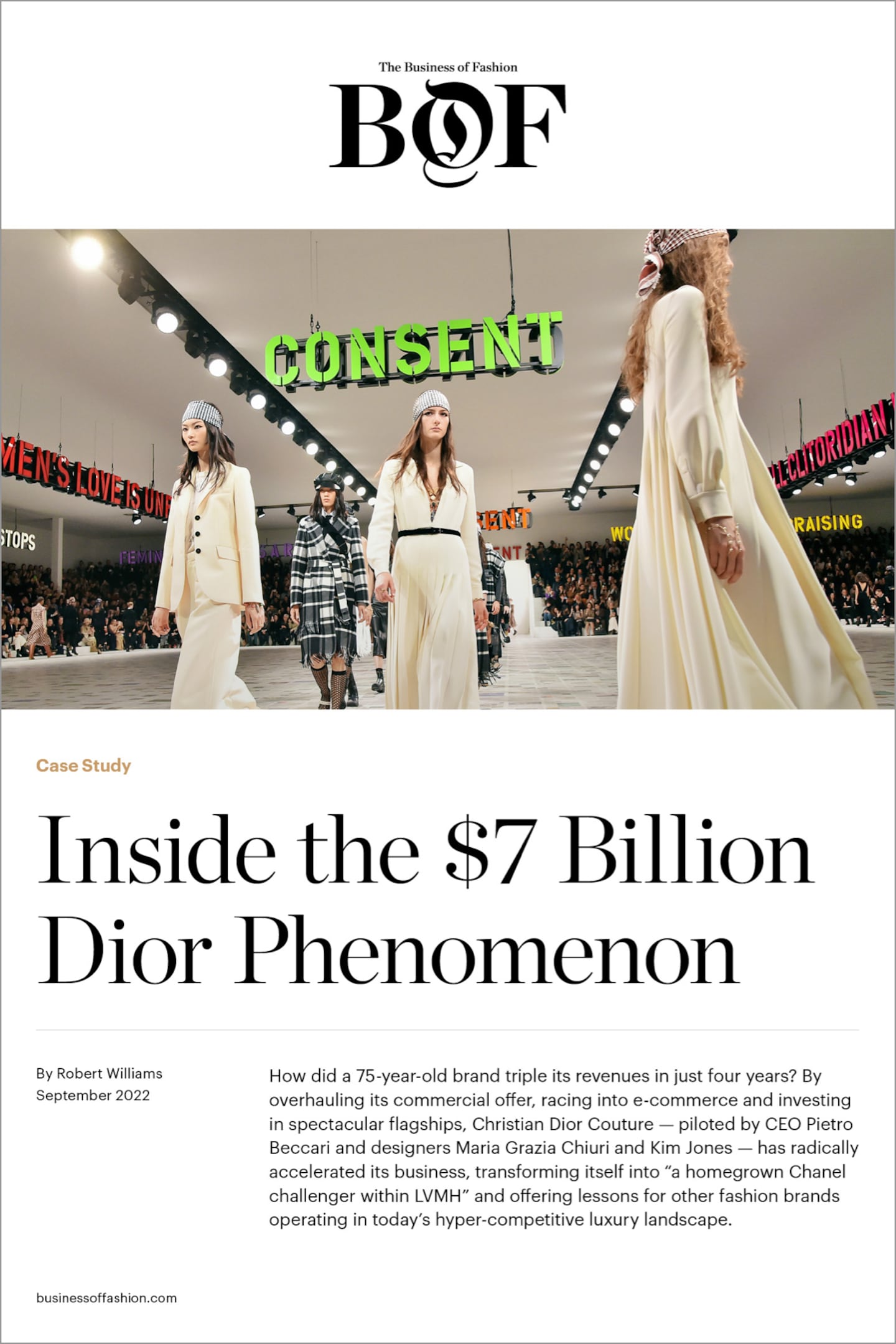
Agenda-setting intelligence, analysis and advice for the global fashion community.

Agenda-setting intelligence, analysis and advice for the global fashion community.

In 1947, mere months after its founding, Christian Dior Couture revolutionised women’s dressing with its post-war “New Look,” securing a place at the pinnacle of French fashion. Later, Dior became the cornerstone of the luxury empire of LVMH chairman Bernard Arnault, who has invested in the house with a “sky’s the limit” approach since the 1980s. But for many years, Dior’s brand, one of modern luxury’s most famous and prestigious marks, remained bigger than its business.
In 2017, LVMH took full control of Christian Dior, kicking off a series of moves that would radically accelerate the business. Under new chief executive Pietro Beccari and designers Maria Grazia Chiuri and Kim Jones, Dior’s business has grown rapidly, with sales roughly tripling since the deal. Its newfound scale has created a virtuous cycle, allowing it to invest even more in spectacular runway shows and sprawling boutiques, all while multiplying estimated profits by a factor of seven. As Dior edges closer to overtaking its historic rival, Bernstein analyst Luca Solca dubbed it “a homegrown Chanel within LVMH.”
This case study examines how Dior became one of luxury fashion’s fastest-growing and most profitable businesses. The company overhauled its product offer and communications: extending a culture of couture craftsmanship and innovation which had long animated its theatrical runway collections, and applying them throughout its commercial lines to create a diversified menu of hit products. The company also raced into e-commerce, rapidly extending its reach beyond the shopping capitals where it operates stores, and rolled out immersive, spectacular flagships to serve as a destination for a broad range of brand devotees, from aspirational tourists to top-spending “VICs.” As the coronavirus hammered sales for most fashion companies, Dior leaned into its momentum by continuing to stage major marketing moments that engaged homebound consumers watching online and fuelled post-pandemic growth.
The strategy appears to be paying off: Dior has rapidly scaled from around €2.2 billion ($2.5 billion) in revenue in 2017 to €6.6 billion in 2021, according to estimates, with the strong growth putting it closer than ever to overtaking mega-brand rivals like Gucci, Hermès or even luxury titan Chanel. With an operating margin above 35 percent of sales, the brand is likely now the fourth most-profitable listed luxury fashion brand, after LVMH stablemate Louis Vuitton, Kering’s Gucci and Hermès.
ADVERTISEMENT
Click below to read the case study now.
Created exclusively for BoF Professional members, case studies explore the important challenges facing the industry today. Discover more case studies and reports from The Business of Fashion here.
Disclosure: LVMH is part of a group of investors who, together, hold a minority interest in The Business of Fashion. All investors have signed shareholders’ documentation guaranteeing BoF’s complete editorial independence.
Tapping into the viral bag charm craze is ‘sensibly opportunistic’ for luxury companies that might as well ‘make some money off the back of it,’ said Neil Saunders, managing director at analytics firm GlobalData.
Rising prices, shifting consumer tastes and manufacturing scandals are eroding trust in luxury, giving counterfeiters and dupe-makers new opportunities to win over shoppers seeking style at a more accessible cost, writes Andrea Felsted.
This week, President Trump’s tariff on Switzerland went into effect, landing levies of 39 percent on every watch the country exports to the US. For some Swiss watchmakers, the threat is existential.
With more luxury openings driving up supply and economic uncertainty tamping down demand, top London hotels are recalibrating their prices.
US prices for obesity-treatment pills that Eli Lilly and Novo Nordisk aim to launch next year will likely be on par with their weight-loss injections, analysts and investors say.
Musinsa did not disclose IPO details, but local media have reported the Seoul-based company could seek a valuation of about 10 trillion won ($7.2 billion) during the listing, potentially minting a fortune for founder Cho Man-ho.
Around 27 percent of the watch group’s sales last year came from the China, Hong Kong and Macau region.
Under the new deal, MCR Hotels will get Soho’s publicly traded shares, while founder Nick Jones and executive chairman Ron Burkle and his investment firm Yucaipa will retain majority control of the business.